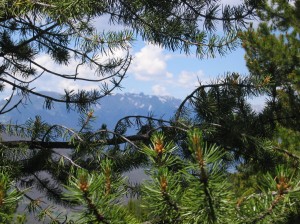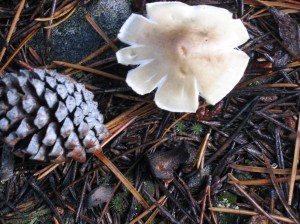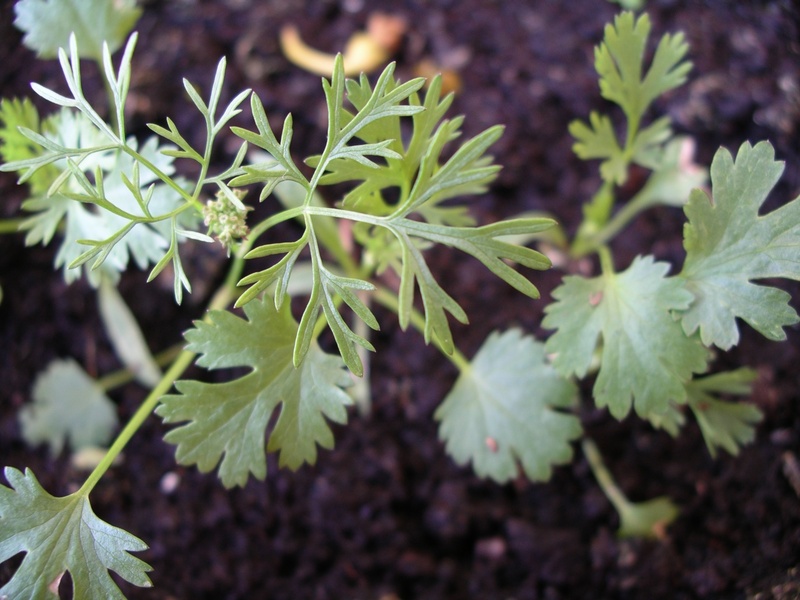

|
Archive for August, 2008
Saturday, August 30th, 2008

I have two posts in the making, but must finish this one first as the end of the month is looming and I want to get my “seasonal foods for August” piece published before September shoves its way into my life. What’s the deal with these pushy months, anyway? How could September and Labor Day be upon us already? I’ll follow this post in a few days with one wrapping up my wilderness journey along the Colorado Trail.
But first, I’m still in a tizzy over Denver being showcased during the Democratic National Convention.
Don’t believe half of what you read about protesters taking over the city. Things were mellow. Recreate ’68 fizzled out and never left the ground. Much like the protesters’ attempts at levitating the Denver Mint. Armed with magic mojo (their words, not mine), a small group of protesters joined mental forces, held hands, and collectively tried to levitate the mint, shake that money-maker, and liberate the $50 million dollars it held hostage. Wizard-attired spokesman, Yippie Pie Man, who came in from out of town (whew, glad he’s not a local), lead the mint-raising rally and encouraged bystanders to contribute their personal energies in redistributing the loose change garnered from the shake down.
Needless to say, their mass brain power was tenuous at best, the mojo wasn’t magic, and the Mint never budged.
Enough of that — on to what’s in season. Fruits and veggies, not politics, however entertaining the political scene may be right now. In my next blog life, I’m going to be a political wonkette. Middle of the road and unbiased, of course. Just the facts.
For now I’ll stick to food.
tomatoes
I’ve focused on tomatoes before, so rather than repeat myself, please go here for relevant nutritional information. Aside from being versatile, luscious, juicy, and colorful, tomatoes promote healthy immune function and have anti-inflammatory properties — both of which are important if you have celiac disease. Or, any other health issues for that matter. Or, if you’re perfectly healthy and you simply want to stay that way.
tomato tip — Carotenoids are the source of vitamin A activity in tomatoes and are also responsible for the red-hot color. Beta-carotene and lycopene are the most talked-about carotenoids in tomatoes. They are also fat-soluble plant chemicals, so you’ll get more bang for your carotenoid buck if you add a touch of olive oil to the mix.
peaches
Oh my gosh, Colorado peaches are the best! Hopefully no one from Georgia is reading this blog. I imagine they would beg to differ, but if you’ve ever tasted a Palisade Peach, you’ll understand what I mean. As some of you know, I belong to a local, organic CSA and have been reaping the veggie benefits all summer long. Last week the farm started shipping out the fruit shares as well. Nine plump, ripe and absolutely gorgeous peaches were included in my box. I made fresh peach cobbler, which was so good I ate what was leftover the next morning for breakfast. Here’s my recipe for gluten-free strawberry/rhubarb crumble tart (or something like that). All I did was substitute the nine peaches for the strawberries and rhubarb, baked it, put a big glob of warm cobbler on my plate, and topped it off with some vanilla ice cream. Well, you’ll just have to experience this bit of food heaven for yourself. It’s too good to describe, so give the recipe a try — this time with peaches. Yum!
Swiss chard
This nutrient-dense plant should probably be called Greek chard as it was Aristotle who in the 4th century BC wrote about its health-promoting benefits. How did he know all that stuff back then? The guy had a very diverse resume. Although there are several different varieties of chard, all are basically tall, green, leafy plants with crunchy stems. All versions are low in calories, high in nutritional value, and full of hearty taste. Some people find this full-bodied flavor a bit much, but I like the taste and the texture. Similar to spinach, kale, and collard greens, chard is rich in vitamins A, C, E, and K and an excellent source of magnesium, potassium, iron and fiber. It is also a good source of osteocalin, which promotes bone health. And yes, we all want strong bones!
summer squash
Related to both the melon and the cucumber, summer squash has a tender center, lots of seeds, and edible flowers called squash blossoms. Like chard, there are several different varieties, but most have similar cooking qualities and all are fairly mellow in flavor. Squash is an excellent source of vitamin C and A, manganese, magnesium, potassium, and fiber. Plus, you can do anything with squash — from basic steaming to bread making. Those great big, overly mature squashes (the kind people try to pawn off on you) have stringy centers and aren’t nearly as tasty as the smaller versions. I like using chunks of squash in garden enchiladas with blue corn tortillas.
Although corn, cantaloupe, and eggplants are in season right now as well, I’ll spare you more nutritional talk. For now, anyway.
Enjoy!
In good health,
Melissa
Wednesday, August 13th, 2008

One-hundred and sixty miles down. Three-hundred and forty to go.
We’re one-third of the way through our trek of the Colorado Trail. Depending on what you read, the trail covers anywhere from 485 to 500 miles — from Denver to Durango — with a total elevation climb of 77,690 feet. As I said in the first post I did on the Colorado Trail, that’s a LOT of uphill. We’re now on a 200 mile section of the CT that shares the same footpath as the Continental Divide Trail, so we’re spending more and more time above 10,000 feet, often in alpine zones above timberline.
I’m cooking and dehydrating all our dinners and we’re eating well. And gluten-free, of course. In fact, I have chicken, quinoa noodle, and veggie soup in the dehydrator as I type. With chile con carne waiting in the wings.
Rather than ramble on about the trip, I’ll share some photos with you instead. I’m in a pinch for time, but when things slow down, I’ll get back to posting on a more regular basis. For now, here’s a preview of where I’m spending so much of my time lately. Although the days are long and tiring, there’s nothing more rejuvenating than spending time in the wilderness. No phones, no money, no traffic, no silly TV shows. I love it!




If that waterfall hadn’t been so dang cold, I would have taken a shower — with all my clothes on. They needed washing as much as I did. I won’t even mention how my hair looks after a week of backpacking, although bad hair days aren’t a big deal when all you see during the day is your hiking partner, a few marmots, and a couple of deer.
Onward . . .
Melissa
Saturday, August 2nd, 2008

I’ve returned once again from my alter-ego role as wilderness woman and found another box full of fresh CSA veggies awaiting my arrival. Help! What do I do with all this stuff? Especially when I’m off in the backcountry for days at a time. It’s not like I can haul around bags of fresh produce with me on the Colorado Trail.
Plus, I’m growing some of my own herbs as well, so I have an abundance of mint, cilantro, rosemary, sage, and basil that I’m adding to everything I cook, bake, dehydrate, and drink.
Anyone care for a mint julep?
To sip while munching corn chips and cilantro salsa? Or cilantro guacamole?
Actually, I’ve never had a mint julep, but I do love my cilantro. I’ve been adding it to everything from corn chowder in the backcountry to cornbread here at home. But before I launch into the recipe, here’s the nutritional profile of cilantro. It truly is a super food.
First, let’s get things straight. Cilantro refers to the leaves of the coriander plant. They look similar to flat leaf parsley. The seeds of the plant are ground and called coriander spice. Cilantro has a vibrantly fresh smell and it adds a distinct flavor to foods, especially southwestern fare. I love it, but apparently not everyone else does. In fact, there’s a whole website dedicated to living the anti-cilantro lifestyle. They even sell “I hate cilantro” clothing and accessories.
Hmmm? Sure seems like there are better ways to spend your energy other than hand-wringing over a harmless little herb.
Aaahh, but on the flipside, the Chinese believe cilantro to have aphrodisiac qualities and use it in love potions. Maybe cilantro is the secret ingredient in Love Potion # 9.
The Coasters? Or The White Stripes?
But I digress. I’ll blame it on too much high altitude, fresh air, and a wandering spirit.
Back to cilantro and why it enjoys “super food” status. Cilantro is rich in all kinds of beneficial phytonutrients, flavonoids, detoxing substances, and antimicrobial compounds. One of which has been found to have twice the antibiotic power of the commonly used drug, gentamicin. In fact, researchers found several different antibiotic substances in fresh cilantro, suggesting its use as a potential food additive to prevent food-borne illnesses. According to other studies, cilantro was found to normalize blood sugar levels and to help stabilize lipid levels.
Not to mention the fact that 2 tablespoons of fresh cilantro contains less than 1 calorie. You get a lot of bang for your buck with this little gem.
I made some Mexican spoon bread last night with Bob’s Red Mill GF Corn Bread mix, cilantro, green chiles, creamed corn, and cheese, but it didn’t come out perfect. It was good, but not perfect. I need to work on it a little more before I pass the recipe off on my blogger friends.
But, my friend Megan, self-described quinoa virgin, sent me this recipe today. Out of the blue. She didn’t even know I was was sitting at my computer daydreaming about how to finish this post. This was Megan’s first experience with quinoa. I guess because she’s one of those wheat eaters and hasn’t had to venture into that parallel universe of alternative grains and flours. Little did she know it was more fun over here. Thanks, Megan — you saved the day. Here it is, her personal comments and all.
quinoa and corn salad
1 cup quinoa
1-1/2 cups water
1/2 tsp salt
2-1/2 cups corn, fresh or frozen (I used fresh, 5 ears)
1 small red onion, minced
2 jalapeno or seranno peppers, seeded and minced
1/2 red pepper, finely diced
3 tbsp lemon juice
3 tbsp lime juice
1/4 cup chopped cilantro
3 scallions, minced
2 tbsp finely minced chives
1 tsp salt
1/2 tsp Tabasco sauce, or to taste
* add grilled chicken if you want
1. Place quinoa in a fine mesh sieve and rinse thoroughly with cold, running water. Bring water to boil in a small pot, add the quinoa and salt and bring to a boil again. Cover and reduce heat to low for 15 minutes. Turn off the heat and keep the pot covered for an additional 5 minutes. Strain off any excess liquid and spread the quinoa out to cool on a tray while preparing the remaining ingredients.
2. Steam or lightly sauté corn until just tender and cool to room temperature. Combine all of the ingredients in a large bowl and gently toss. Season with additional salt, pepper, or hot sauce to taste. Serve with fresh lime wedges.
Serves 6 (Ah, I don’t think so.)
Yum, sounds great!
Melissa
P.S. Miles Collins, prolific chef/photographer from England, has an interesting blog post about hawaj spice blend which is absolutely wonderful and contains ground coriander (cilantro) seed. I’ve used my own version of this in chana dal and love the flavor it imparts.
Disclaimer: All material on this website is provided for informational and educational use only and
should not be used for diagnostic purposes. Consult with your physician regarding any health or medical concerns you may have.
|
|




















